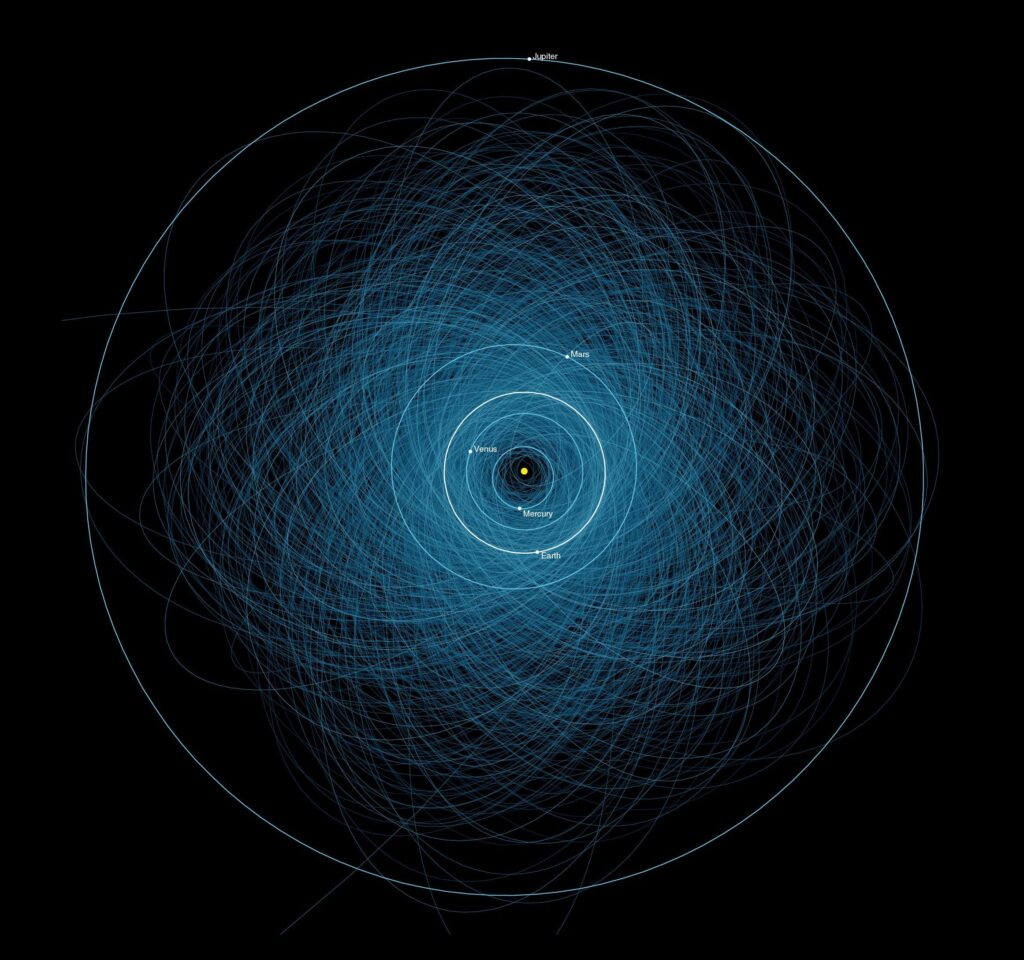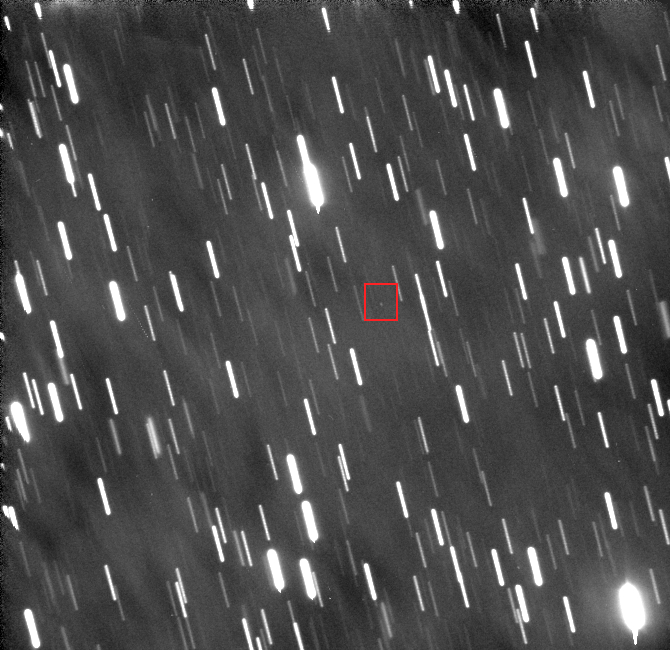Asteroids and comets that with their orbits pass at a minimum distance from the Earth’s orbit less than 0.3 AU (about 45 million km), are classified as NEOs (Near Earth Objects). Nowadays about 32,000 NEOs are known (about a hundred comets). Still, the new discoveries made by US surveys such as the CSS (Catalina Sky Survey) and Pan-STARRS (Panoramic Survey Telescope And Rapid Response System), increase the number of NEOs by about 3000 yearly. A NEO is also considered a PHO (Potentially Hazardous Object), when the minimum distance with the Earth’s orbit (MOID, Minimum Orbit Intersection Distance), falls below 0.05 AU (about 7.48 million km), and the diameter of the body is at least 140 m. Currently, the known PHOs are about 2300. The typical NEO’s dimension ranges from one meter of the smaller ones to 32 km of (1036) Ganymed. To date, 95% of near-Earth asteroids with a diameter greater than 1 km have been discovered. We want to reach the same percentage for objects from 140 m upwards in the next few years.

This figure shows the orbits of the 1400 PHAs known in 2013. The Earth’s orbit is the blue circle. This partial representation makes us understand how “crowded” circumterrestrial space can be (Credits: NASA).
NEOs represent an impact risk for our planet, and being relatively small objects with low surface reflectivity (i.e. dark), they can only be discovered when they are already near the Earth. The small size should not be misleading. What matters in an impact with the Earth is the impactor’s kinetic energy, which depends not only on the mass but also by the square of the speed. Unfortunately, the typical geocentric speeds of NEOs are 15-20 km/s, and the energies involved can be hundreds or thousands of times higher than that released in the explosion of the Hiroshima atomic bomb. Furthermore, the NEOs’ orbits are chaotic and it is difficult to predict their position in space even after a century. For this reason, continuous monitoring of this population of bodies is necessary, both to discover new members (an estimated population of 9 million NEOs with a diameter greater than 100 meters) and to keep under control those already known.

The near-Earth asteroid 2020 AL was imaged on January 2, 2020, by the “Cassini” telescope when it was 22 million km from Earth. The asteroid is about 30 meters in diameter (Credits: INAF-OAS/A. Carbognani).
In OAS with the “Cassini” telescope, astrometric observations are made to follow up the newly discovered NEOs to obtain the necessary data to compute the heliocentric orbit. The NEOs to be confirmed, mostly discovered by large-field surveys such as Catalina and Pan-STARRS, are placed in the “The NEO Confirmation Page” by the Minor Planet Center for independent observations.
It should be noted that the astrometric techniques used for NEOs are the same as those used in the SST field: it would not be possible to make good SST observations on difficult subjects (because they are very fast), such as artificial satellites/space debris without having a good experience in asteroid astrometry. It can be said that, with the NEOs follow-up, the space surveillance activity carried out by OAS, ranging from the circumterrestrial environment to deep space, is completed.
The astrometric measurements on near-Earth asteroids, with an uncertainty of the order of 0.1″, are sent in real-time to the Minor Planet Center which computes the heliocentric orbit and assigns the provisional acronym that identifies the asteroid by publishing a Minor Planet Electronic Circular that certifies the astrometric work. From the orbital data, NASA with the Sentry system and the Near-Earth Object Coordination Center (NEOCC) from ESA, can evaluate the impact probability of the asteroid with the Earth in the future.
